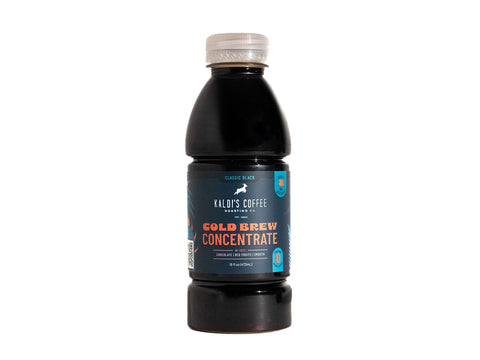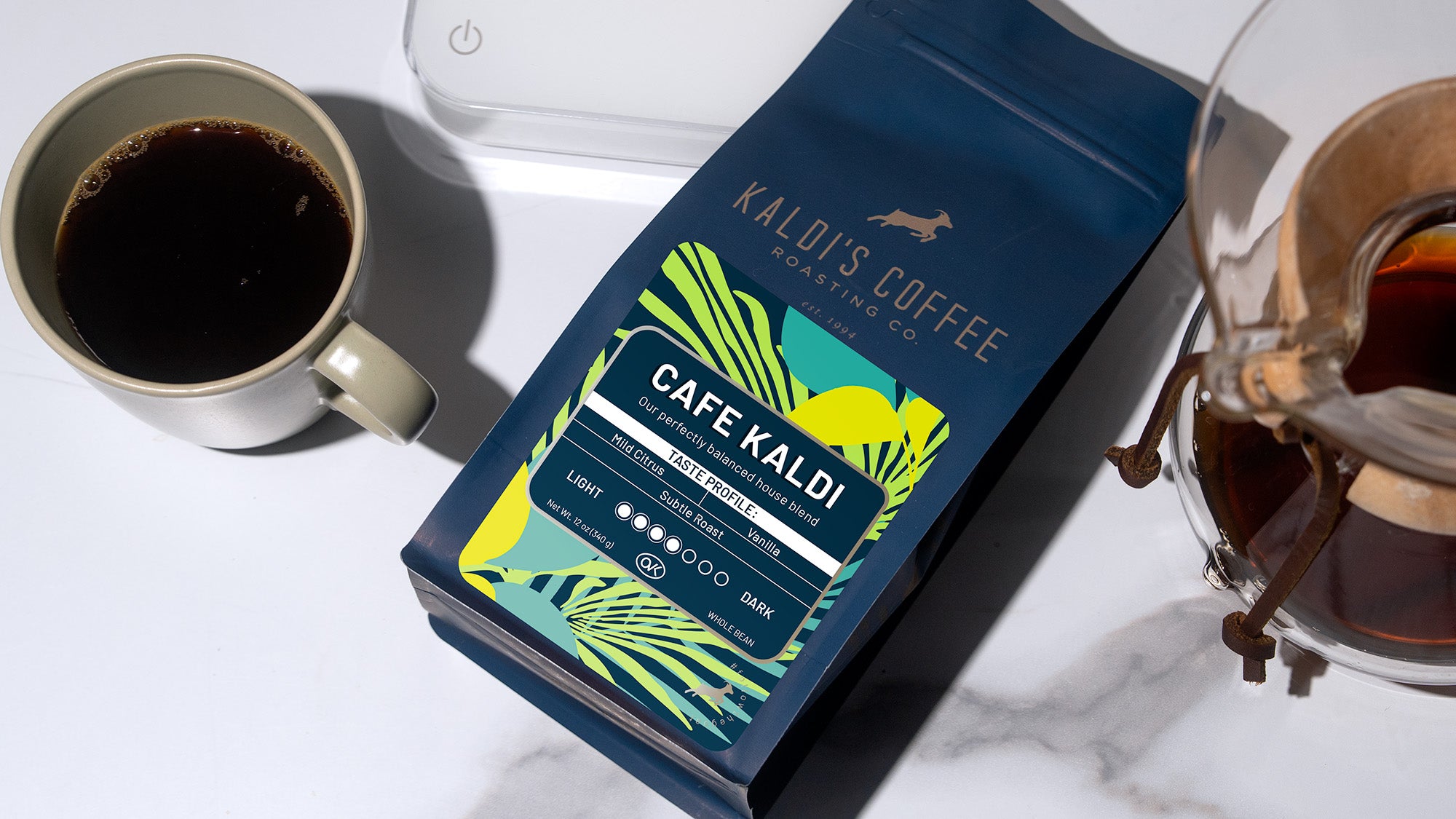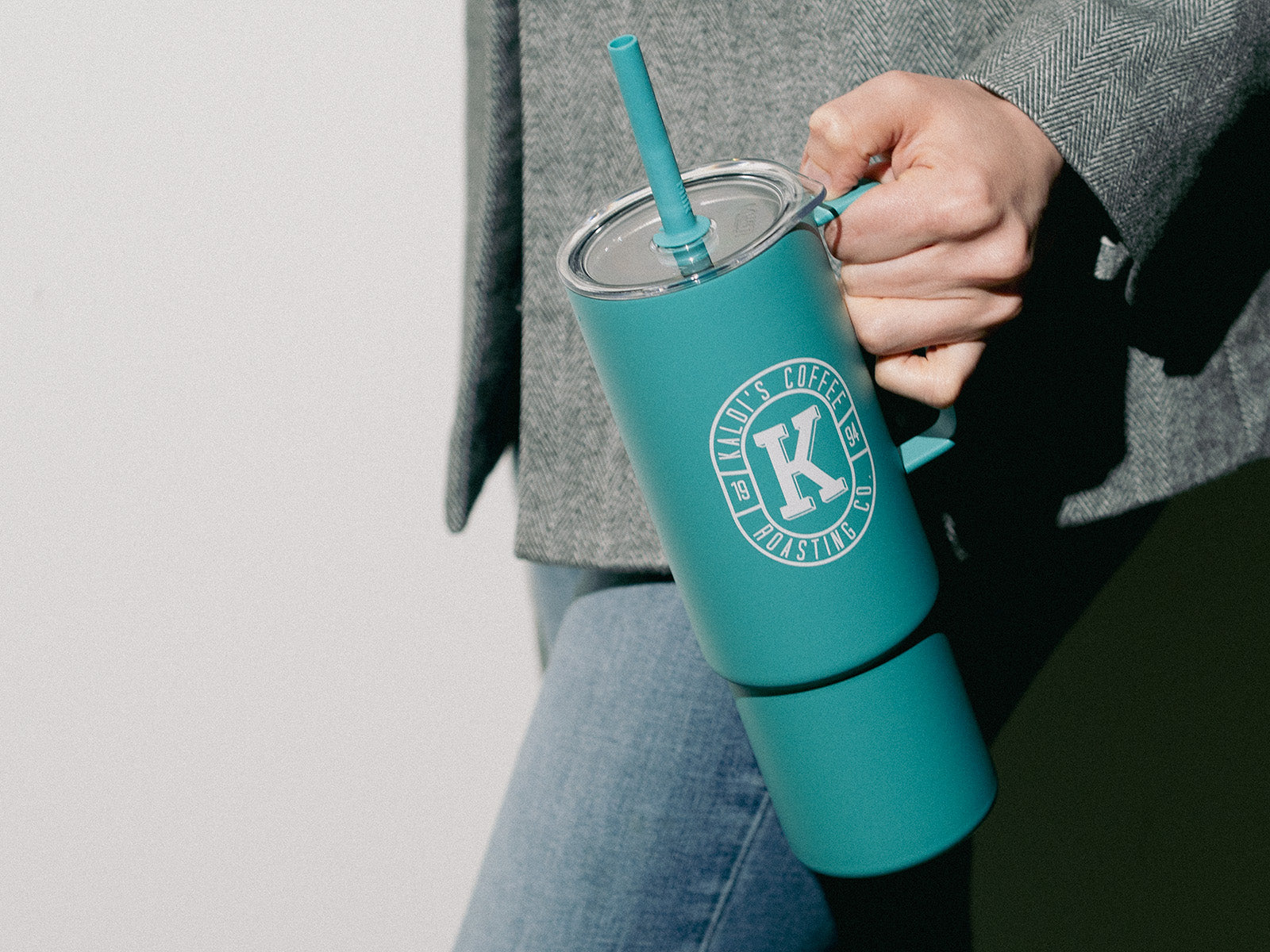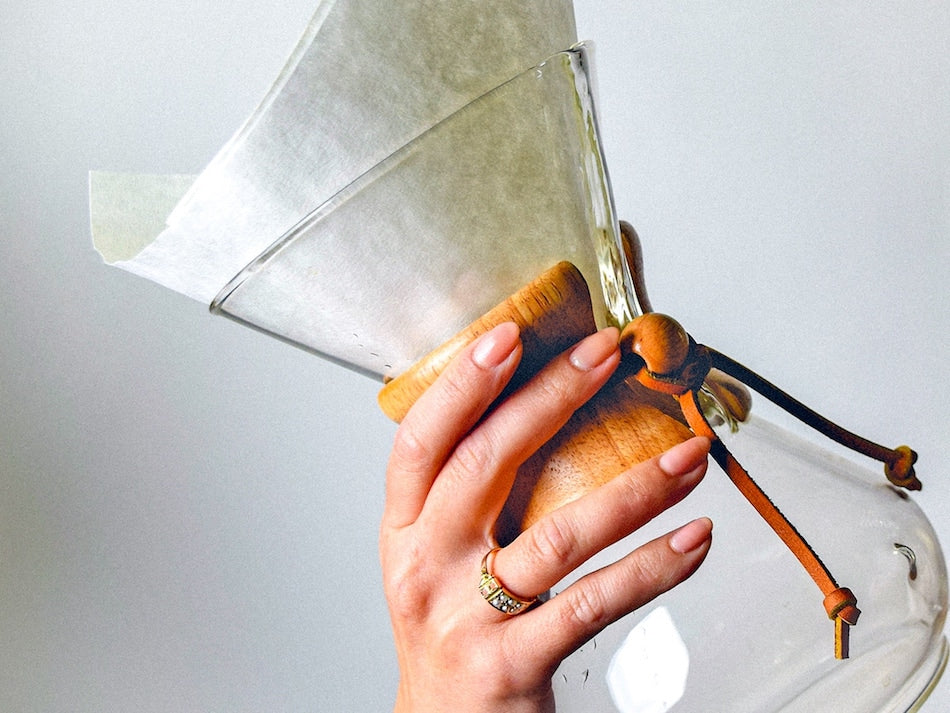Cold brew coffee is one of the hottest things in coffee. It fills a nice niche in your coffee drinking schedule, is refreshing and sweet, and can be just as — or even more — convenient as popping a pod in a machine.
Interested in learning more about this delicious beverage and how it can fit into your coffee life? Read on to find out:
- How is cold brew made?
- Cold brew vs. iced coffee
- Why drink cold brew?
- Is cold brew stronger?
- How long does cold brew last?
editor's note: updated 5/13/2023 with a new Hario Switch Flash Chill recipe and a new Youtube short
WATCH OUR COMPANION YOUTUBE SHORT (1 MINUTE)
Before we get started:
Cold brew vs. cold brew concentrate:
Cold brew concentrate is cold brew with a very high coffee to water ratio. The drip coffee you're used to is anywhere from 1 part coffee to 16 to 20 parts water. We also call this "strength".
Cold brew concentrate is often 1:4 to 1:8. It is literally a concentrated coffee drink and is much stronger - and has much more caffeine - than the same amount of drip coffee liquid.
You will see us reference these terms a few times, so this is worth a primer!

#1 | How is cold brew made?
Coffee grounds (usually coarse) + water (cold or room temp) + time (8 to 24 hours) = most cold brew
Cold brew coffee is usually made by steeping coffee in water for a number of hours at cold or ambient (room) temperature. This slow, low temp brew makes cold brew taste very different from hot brewing the same type of coffee beans: mild chocolate and mellow, low acidity fruits are common flavor notes. We tested this for ourselves, and you can read our findings in our blog, "Cold Brew Taste Test: 5 Coffees, Hot vs. Cold".
Cold brewing – or in many cases ambient temperature brewing – uses time in place of temperature to ensure extraction. Cold brewing can take between 8 and 24 hours, depending on who you ask and what your target cold brew taste is.

You can use your trusty French Press to make cold brew - Get our recipe + Youtube video here
Cold brew coffee is also often made as a concentrate which is then diluted - or "watered down" - to taste from there. So, while pour-over coffee and most drip coffees have a brewing ratio of about 1 to 16 coffee to water (ex: 20 grams of ground coffee brewed with 320 mL of water), cold brewing is usually done with less and with a wide range of possibilities to suit different tastes.
MORE ABOUT COLD BREW RATIOS:A 1:8 or 1:9 ratio is pretty common when brewing your cold brew coffee — so for instance, 50 grams of ground coffee to 450 milliliters of water. Some stronger brewing ratios out there offer even more concentrated potency. But other cold brew recipes are actually a lot closer to hot coffee ratios at 1:11 or 1:12, and are specifically geared to making “ready-to-drink” cold coffee - i.e. no dilution needed. These 1:12 cups will also mean your mug of coffee has more caffeine in it by volume, which is where another "myth" about cold brew may come from (but we'll cover that in a bit). |
#2 | Cold brew vs. Iced coffee
Iced coffee used to mostly be just what it sounds like: normal brewed drip coffee or espresso to which one adds ice. It was not — and maybe still isn’t — uncommon to watch a barista or diner employee simply take some coffee from batch brew, throw some ice in it, and call it “Iced Coffee”.

“Flash chill” or “flash brew” coffee is a more recently popularized innovation on iced coffee. These “flash” methods take two steps to increase the quality of iced coffee:
- reduce the ratio of water to coffee to account for the added ice that would otherwise dilute the coffee, and
- cool down the hot-brewed coffee immediately by brewing directly into the ice-filled vessel.
Cold brew is slow-steeped for longer periods of time. It differs from iced coffee, which has been hot brewed specifically to extract those additional layers of flavors and other natural coffee compounds that don’t get extracted much or at all in cold brew (see more about extraction in our "Science Corner" section below).
WANT TO TRY FLASH CHILL?
Check out our Recipe Blog using the Hario Switch.
Watch our Youtube video by clicking the thumbnail below:
#3 | Why drink cold brew?
- Forgiving brewing process
- Highly convenient
- Less acidic
- All the health and energy benefits of hot coffee
- Great way to use older coffee beans
Going a little deeper: Cold brewing can be very forgiving of older coffee beans, and it’s easy to prep in large quantities in advance. This creates a refreshing, convenient, and caffeinated drink for busy mornings.
Folks who drink cold brew also buzz about one other cold brew feature: mild and low acidity! Cold brew coffee tastes less acidic than hot brewed coffee from the same beans, and it’s famously mellow and smooth––not just on the palate, but also the stomach. But why?
Well, science. Heat has a huge effect on extraction*. Cold brewing leaves behind some acids that hot coffee pulls out easily. This not only creates a coffee that is flavorful, smooth, and mellow, but also one that can hold up for days and still taste fresh.
*Science corner:Want to know more about how this works? Hot water is simply better at dissolving soluble solids. Hot water is also better at weakening molecular bonds and creating oxidative reactions that release–extract!–a ton of the organic compounds locked up inside a coffee bean. But cold brew is a lot less efficient at this, meaning smaller yields of some compounds in coffee, particularly specific acids and oils. While these compounds help create depth and aroma in a hot cup of coffee, they are what’s known as “volatile”, and can disappear or degrade once that hot coffee cools. ACID TRIP Even more, hot coffee and cold brew from the same exact beans may share a similar pH value, but studies have suggested that pH doesn’t correspond to the actual titratable acidity and total acids differences between the two brew methods. Cold brew’s acids are basically weaker and might be why folks with more sensitive stomachs can enjoy it more than a hot cup of coffee. |
Cold brew isn’t just convenient and easy on the stomach, but like all coffee, it has some healthy compounds too:
- chlorogenic acids
- antioxidants
While cold brew coffee will typically extract less of these organic compounds than a corresponding hot coffee of the same origin/roast, these helpful compounds are still present in most cold brew coffees.

#4 | Is cold brew stronger?
It can be if you want it to be! It can also be weaker.
One of the biggest myths about cold brew is that it’s always strong and highly caffeinated. This isn’t exactly true. What is true is that because it’s brewed with a higher ratio of coffee to water, the concentrate that is made can have considerably more caffeine than the same volume of hot brewed coffee, even espresso. This is in spite of hot brewing being able to more effectively extract caffeine and other compounds.
However, almost nobody drinks cold brew concentrate straight. It’s usually cut with more water, ice, or even milk or alt milk, which pushes the caffeine content of a single serving back down to the normal range for a typical cup of coffee. So unless you’re making a strong concentrate and chugging it as is, your glass of cold brew should be about the same as a hot cup of coffee, caffeine-wise.
But what about your favorite store-bought cold brew, or the cold brew from your favorite cafe? Just like drip coffee, the strength of cold brew coffee varies place to place and product to product. It's essentially up to the desired strength of the manufacturer or coffee shop.
#5 | How long does cold brew last?
As a concentrate and when refrigerated, cold brew can last a few days to about a week and a half. If you’re brewing your own cold brew, we strongly advise storing it in the fridge after it’s been brewed and filtered. Be sure to keep it in a good airtight container and not open it too frequently for the best results.
Note: If it’s been diluted with milks or alternative milks, it probably should be consumed within a few days. Same for plain cold brew if you’re opening the container to pour yourself a glass every day.
Most people drink cold brew plain or on ice, but some like to add flavorings or milks. Check out our honey alt milk cold brew recipe for inspiration!

How long ready to drink cold brew purchased in a grocery store or cafe lasts depends on how it’s made, and what’s written in the label. Kaldi’s Coffee cold brew cans all have a Best By date printed on the can. This best by date is applicable until the can is opened; once it’s opened, it’s best to consume it within a day or two, for best taste.
BONUS | What does cold brew coffee taste like?
After learning all this information about the cold brewing process, you may be left wondering: What will this make my coffee taste like vs. hot brewing?
As we mentioned above, we asked ourselves that same question and devised a little test. Using 5 coffees - 2 blends, 3 single origins - we used our French Press cold brewing method and our traditional cupping method to do a side by side comparison.

As a basic summary, we found:
- The cold brews presented oxidation notes, but this was mostly covered and outweighed by dripping flavors of dark chocolates.
- The cold brews also consistently mellowed out each coffee’s roast notes, most notably in our French Roast blend.
- The mouthfeel of cold brews was consistently a thicker, creamier body that coated the palate.
| Read the full experiment and breakdown in our blog: |
KALDI'S COFFEE COLD BREW CONCENTRATE
Our bottled Cold Brew Concentrate takes all the best parts of cold brew coffee and adds in even more convenience. We think of it as perfect coffee in moments.
This 3:1 Concentrate makes delicious cold drinks, hot drinks, and iced lattes. You can do this with any concentrate you make, as well, but our bottles make it easier and take out the 12-18 hour wait time. You can learn more and get recipes on our Cold Brew Concentrate page.
SHOP NOW | $14.49
SUMMARY:
We hope you found this helpful! Here's a recap of everything we covered before you start sipping your next tasty cold brew:
- Cold brew coffee is:
- Made by steeping more-coarsely ground coffee in cooler water for longer periods of time
- Different from iced coffee based on its brewing method and overall taste
- Great to drink for its refreshing qualities, convenience, forgiving brew method, and health benefits
- Only stronger and only has more caffeine than hot coffee if you don't dilute it as much as your regular cup
- Able to last for a pretty long period of time in the fridge
Cheers, and happy (cold) brewing!










